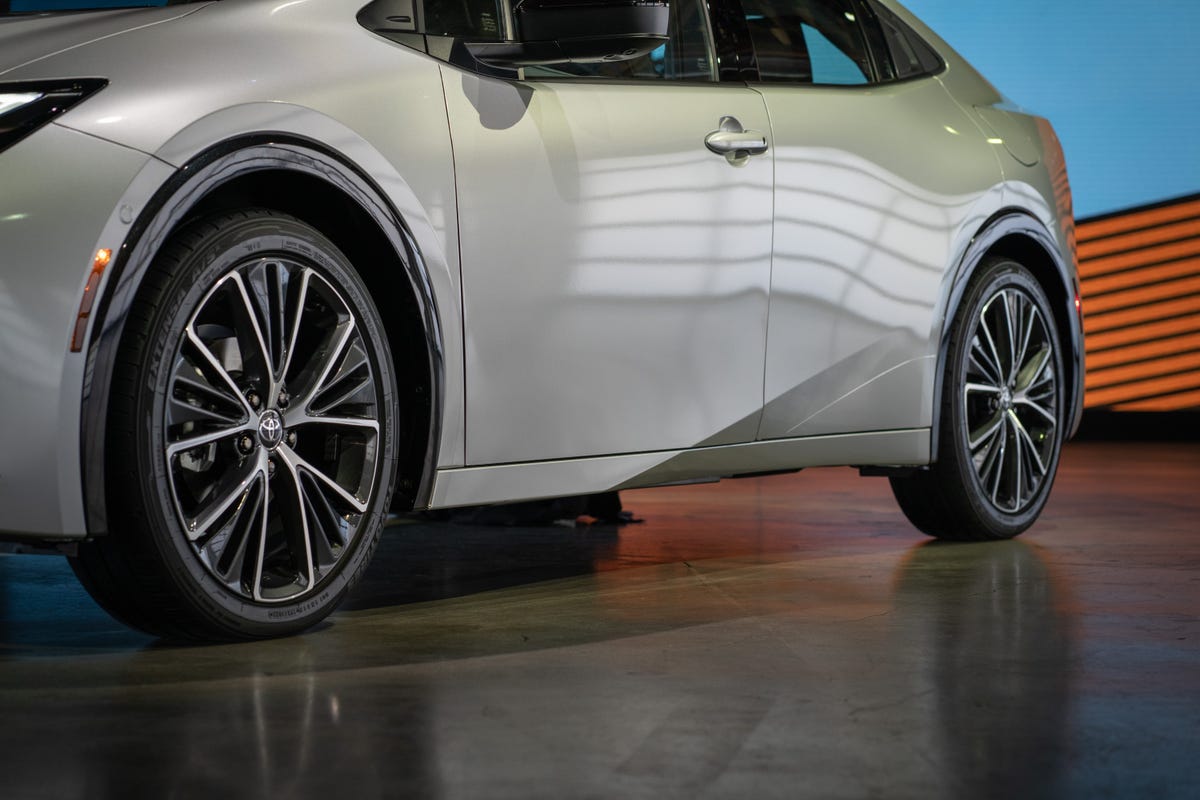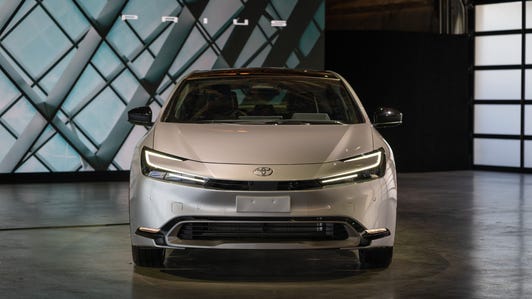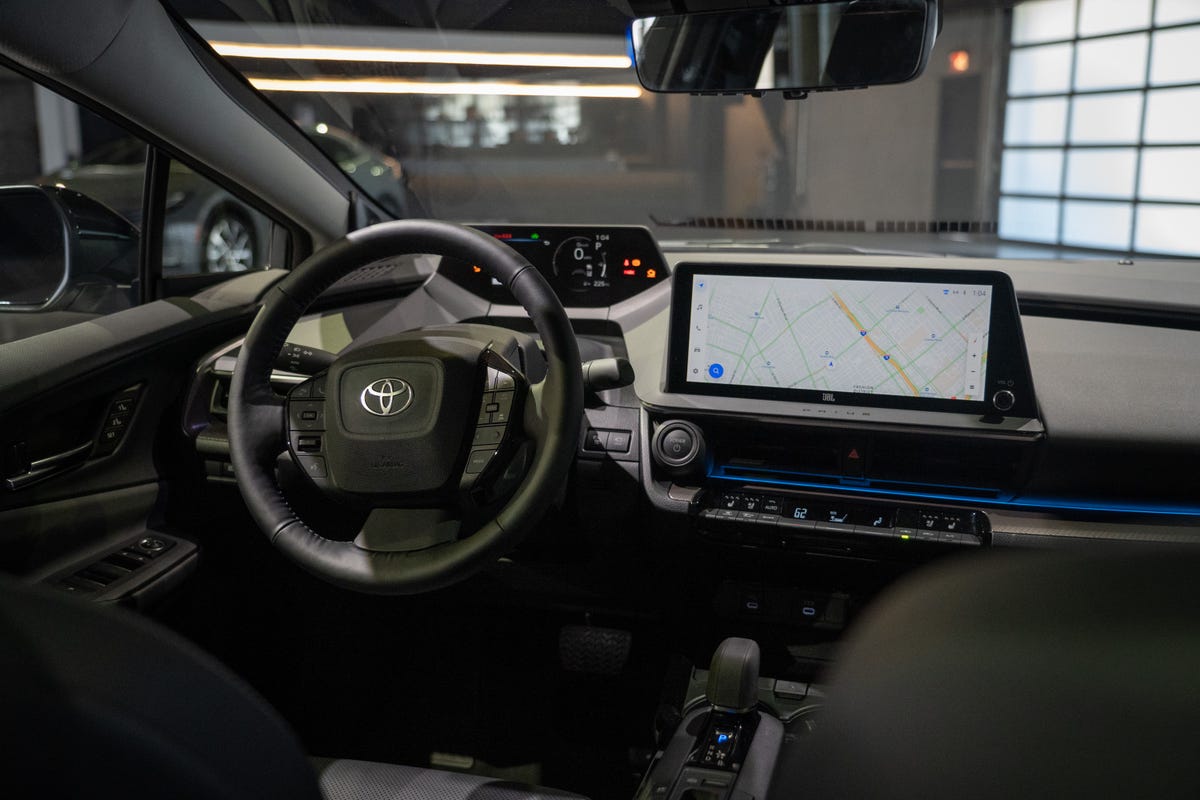
The all-new 2023 Toyota Prius and Prius Prime have no right to look as good as they do. The fifth generation of Toyota's eco-car icon is rocking a sharp, edgy new design and an updated hybrid powertrain that boasts significantly more power than before.
There is perhaps no car that's more synonymous with the word "hybrid" than the Prius. Toyota's wedge-shaped hatchback was the world's first production hybrid car when it hit Japanese roads back in 1997. It was still the first and only hybrid when it reached the States in 2001. Since then, over 5 million Prii have rolled out of dealerships and onto American roads and the Prius' success has solidified Toyota's reputation as the hybrid brand.
Sharp new look
The new generation is still recognizable as a Prius, but its shape has shifted. The five-door liftback's design is much more windswept with a more severely angled windshield. The roof sits 2 inches lower than the previous generation and the Prius' seating position is also about an inch closer to the ground. Meanwhile, the body is nearly an inch wider at the rear, emphasizing the hunkered down proportions of this sportier hybrid.
17-inch wheels are standard equipment, but up to 19-inch rims can be found on XLE and XSE grades.
Antuan Goodwin/CNET CarsToyota's Hammerhead headlamps glare aggressively from the leading edge of the Prius' low hood; their design is similar to the fascia of the recently debuted bZ4X electric crossover. Meanwhile, the tail inherits some of its design DNA from Toyota's Mirai, echoing the shape of the hydrogen-powered sedan's brake lights and the way they slightly fold under the corner sheet metal.
2.0-liter Hybrid powertrain
The new Prius is powered by Toyota's fifth-gen hybrid powertrain which upgrades to a larger 2.0-liter gasoline engine and a newly developed lithium-ion battery. The new battery is, pound-for-pound, about 15% more powerful than the old nickel-metal pack. This allowed Toyota's engineers to save space with a smaller unit that tucks deeper into the chassis beneath the second-row bench. Keeping weight low is an all-around good thing for driving dynamics.
These improvements boost the front-driven 2023 Prius' output to 194 horsepower, a big step up from the old 1.8-liter's 121 ponies. (Updated torque estimates have not yet been announced.) Hustling from 0 to 60 mph now takes just 7.2 seconds, down from 9.8 ticks before. Meanwhile, the Prius retains its excellent fuel economy, returning 57 combined mpg according to Toyota's estimates.
Electronic all-wheel drive is also available, adding an electric motor to the rear axle that spins up as needed. Peak power climbs to 196 hp in this configuration -- hybrid math, with its overlapping torque curves, can be weird -- while the 0-to-60 sprint drops to an even 7.0 seconds. Increased traction and stability, and not outright speed, are the true benefits of going AWD.
The Prius Prime
In addition to a standard J1772 charging port, you'll be able to spot the new plug-in hybrid Prius Prime by its novel Solar Roof. Toyota tells me the roof trickle-charges the traction battery when parked and helps power auxiliary systems, including air conditioning, when driving. Behind the scenes, the Prime upgrades to a larger lithium-ion battery, which Toyota says nets it a 50% increase in EV range over the previous generation's 25 miles. I'll do the math for you: It's around 37.5 miles.
Also powered by a 2.0-liter fifth-gen hybrid system, the 2023 Prius Prime gets an even bigger horsepower bump to 220 hp. That's a whopping 100 ponies more than the previous generation, and its 6.6-second 0-to-60 time is quicker than the new Acura Integra when equipped with its CVT. Depending on how the Prime delivers its torque and handles in the corners, this could actually be a Prius that's fun to drive.
Toyota Audio Multimedia
The new interior hits a similar blend of "inexpensive, but not cheap" that I've come to expect from the Prius. The design and ergonomics borrow heavily from the bZ4X, featuring a digital instrument cluster sitting high atop the dashboard above a low-slung steering wheel. It's a bit odd looking, but after sitting in the Prius for a while (and driving the bZ4X earlier this year), I dig it.
Toyota's Audio Multimedia infotainment lives on a standard 8-inch central touchscreen with standard wireless Android Auto and Apple CarPlay. The software is over-the-air updatable and features a wide range of connected features that may require a subscription to continue using beyond trial periods ranging from one to 10 years. Throughout the cabin, six USB Type-C ports can be found in the center console, below the dashboard and on the second row.
Score a Prius Limited or Prius Prime XSE Premium to step up to a big 12.3-inch touchscreen. These top spec models also add phone-as-key capability, a power liftback and JBL premium audio. The Prius Limited also has a fixed panoramic glass roof.
The Prius joins the big screen car club with up to a 12.3-inch central display.
Antuan Goodwin/CNET CarsToyota Safety Sense 3.0
Standard across all Prius models is Toyota's Safety Sense 3.0 drive aid suite. You don't even have to check a box to get pre-collision alerts with pedestrian detection, lane-tracing steering assist, full-speed adaptive cruise control and more. New for 2023 is a standard feature called Proactive Driving Assist, which automatically adds steering and braking assist to follow a bend in the road or if you get too close to the car ahead. Sounds terribly annoying.
Prius Prime's additional front corner radar sensors and driver monitoring camera power more optional safety and convenience features like hands-free parking assist, front cross-traffic alert and lane change steering assist. Totally new to Toyota and the Prime is Traffic Jam Assist, enabling hands-free steering, braking and accelerating in low-speed (under 25 mph) or stop-and-go traffic. This is a supervised driver aid tech, so a camera watches the driver's eyes to make sure they stay on the road.
The 2023 Toyota Prius goes on sale in December of this year with the plug-in Prius Prime joining it in early 2023. Pricing and more detailed specs and economy estimates will be announced closer to their respective launch windows.









 Add Category
Add Category



